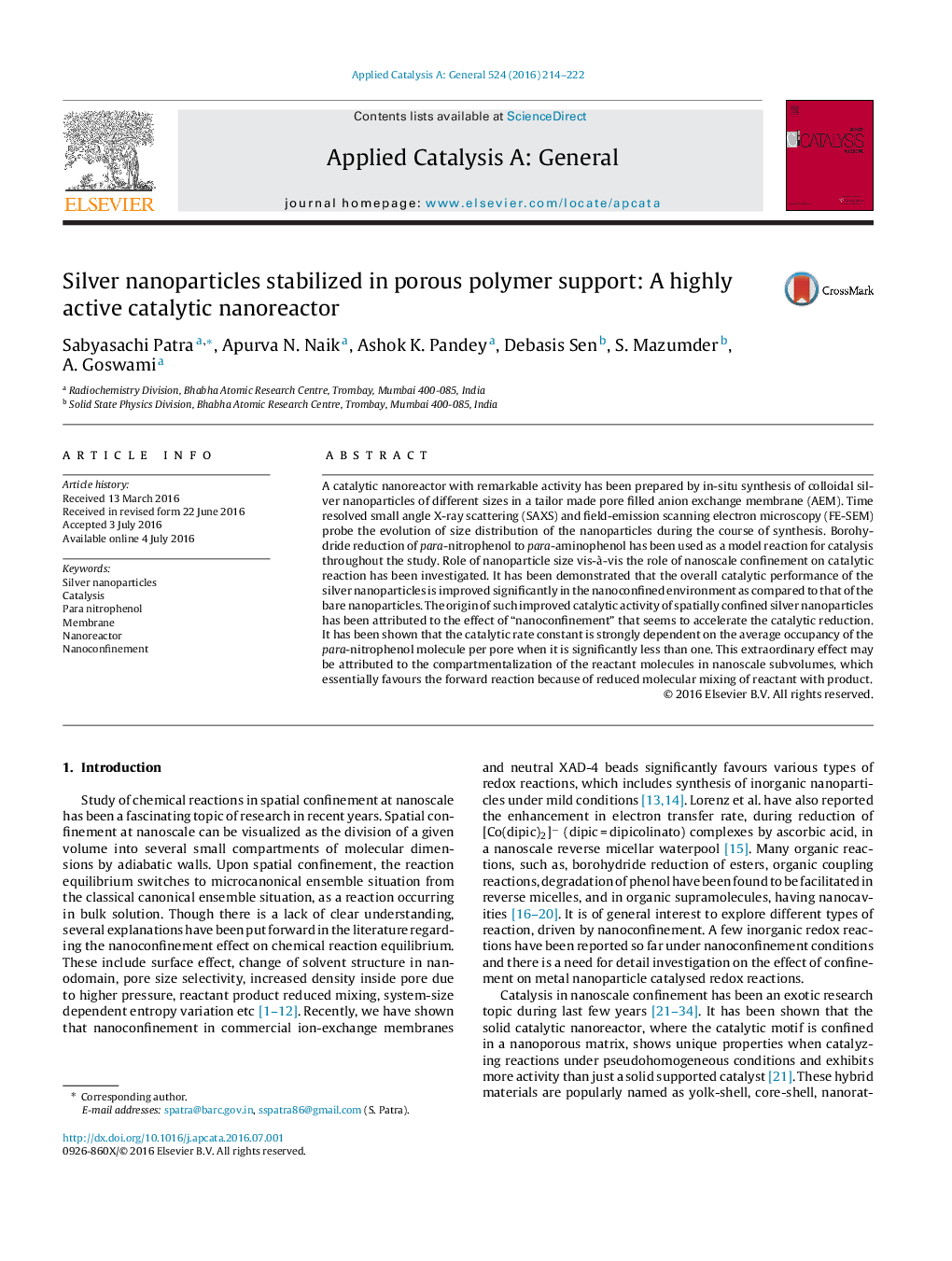| Article ID | Journal | Published Year | Pages | File Type |
|---|---|---|---|---|
| 38740 | Applied Catalysis A: General | 2016 | 9 Pages |
•AgNPs with variable sizes have been prepared in a pore filled membrane (AEM).•Enhancement of catalytic activity of the AgNPs in AEM has been observed.•The catalysts have been found to be highly reusable.•Enhanced catalytic activity has been attributed to the nanoconfinement effect.•Entropic origin of nanoconfinement effect has been explored.
A catalytic nanoreactor with remarkable activity has been prepared by in-situ synthesis of colloidal silver nanoparticles of different sizes in a tailor made pore filled anion exchange membrane (AEM). Time resolved small angle X-ray scattering (SAXS) and field-emission scanning electron microscopy (FE-SEM) probe the evolution of size distribution of the nanoparticles during the course of synthesis. Borohydride reduction of para-nitrophenol to para-aminophenol has been used as a model reaction for catalysis throughout the study. Role of nanoparticle size vis-à-vis the role of nanoscale confinement on catalytic reaction has been investigated. It has been demonstrated that the overall catalytic performance of the silver nanoparticles is improved significantly in the nanoconfined environment as compared to that of the bare nanoparticles. The origin of such improved catalytic activity of spatially confined silver nanoparticles has been attributed to the effect of “nanoconfinement” that seems to accelerate the catalytic reduction. It has been shown that the catalytic rate constant is strongly dependent on the average occupancy of the para-nitrophenol molecule per pore when it is significantly less than one. This extraordinary effect may be attributed to the compartmentalization of the reactant molecules in nanoscale subvolumes, which essentially favours the forward reaction because of reduced molecular mixing of reactant with product.
Graphical abstractThe redox catalytic activity of confined silver nanoparticles in a polymeric nanoreactor has been found to be remarkably high in comparison to bare nanoparticles. The extraordinary effect has been explained in terms of reduced molecular mixing of reactants and products under nanoscale confinement.Figure optionsDownload full-size imageDownload high-quality image (103 K)Download as PowerPoint slide
